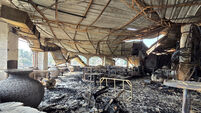50 years of planning undone by colossal wave
She thought the town’s thick, two-storey-high harbour walls would protect against any big wave. Besides, her home was perched on a hilltop more than two kilometres from the water’s edge.
It was also just below a designated ‘tsunami refuge’ — an elevated patch of grass that looked safely down across the town’s highest four-storey buildings.














